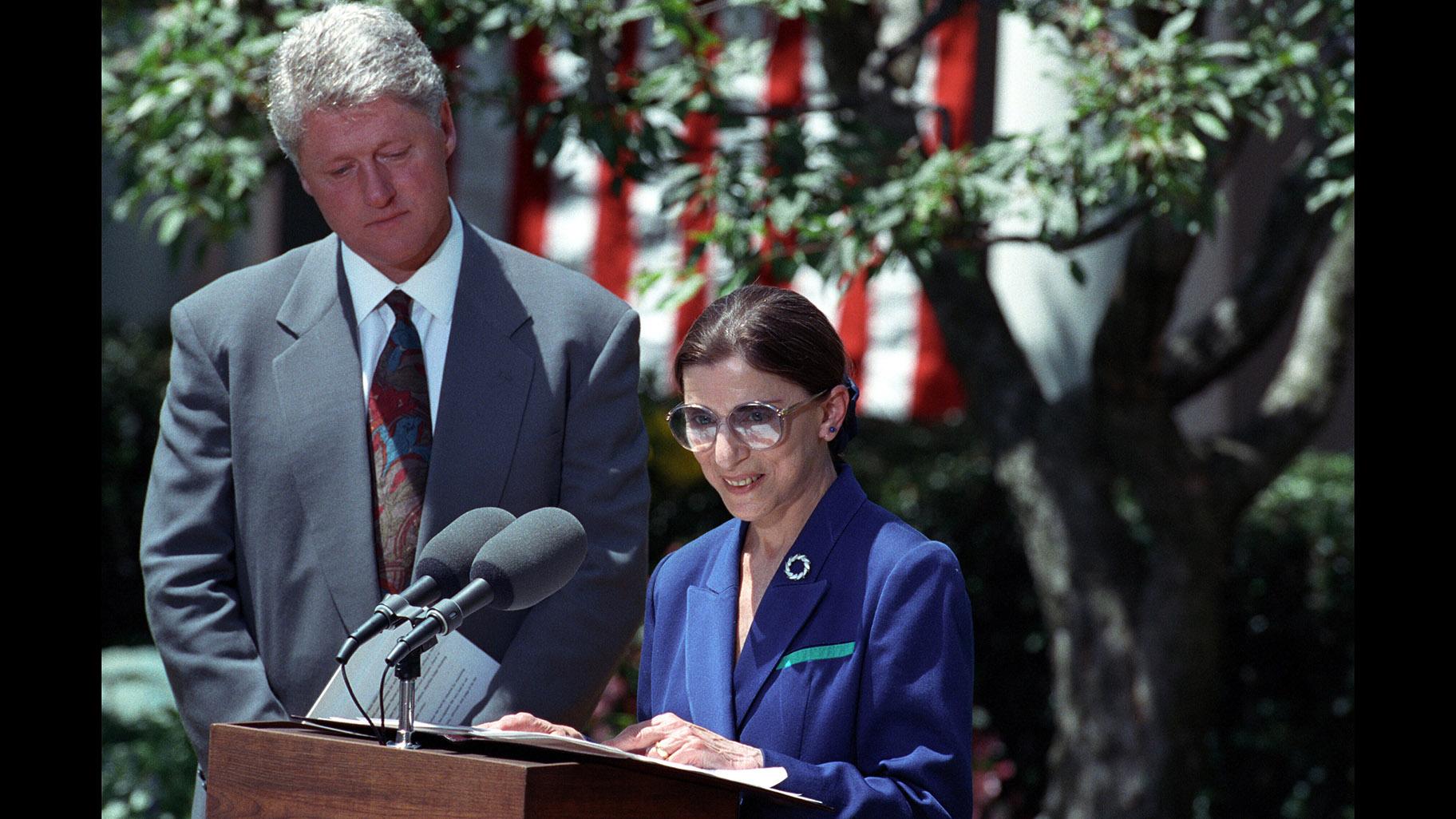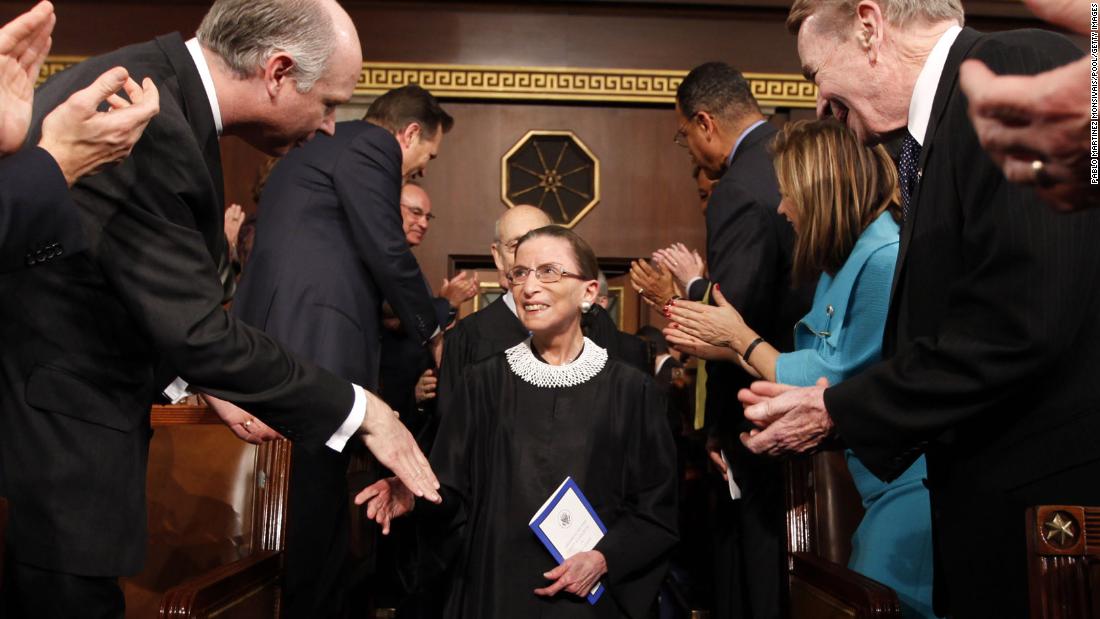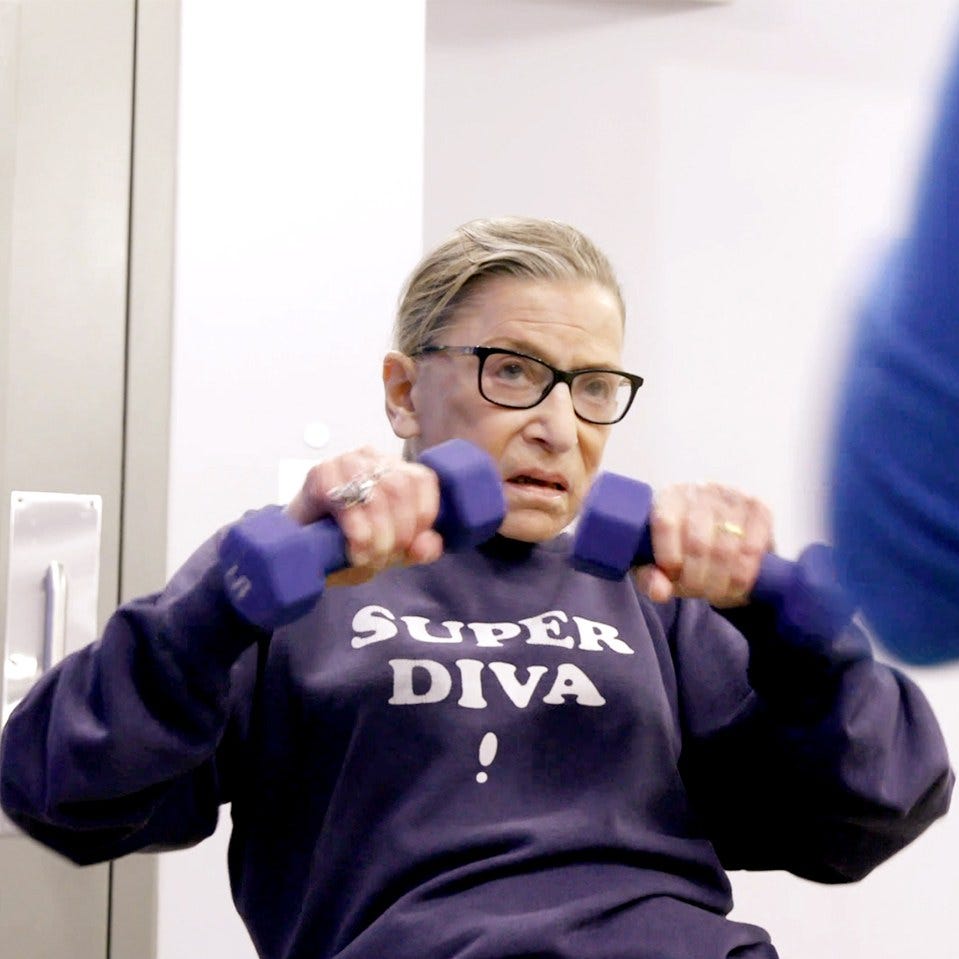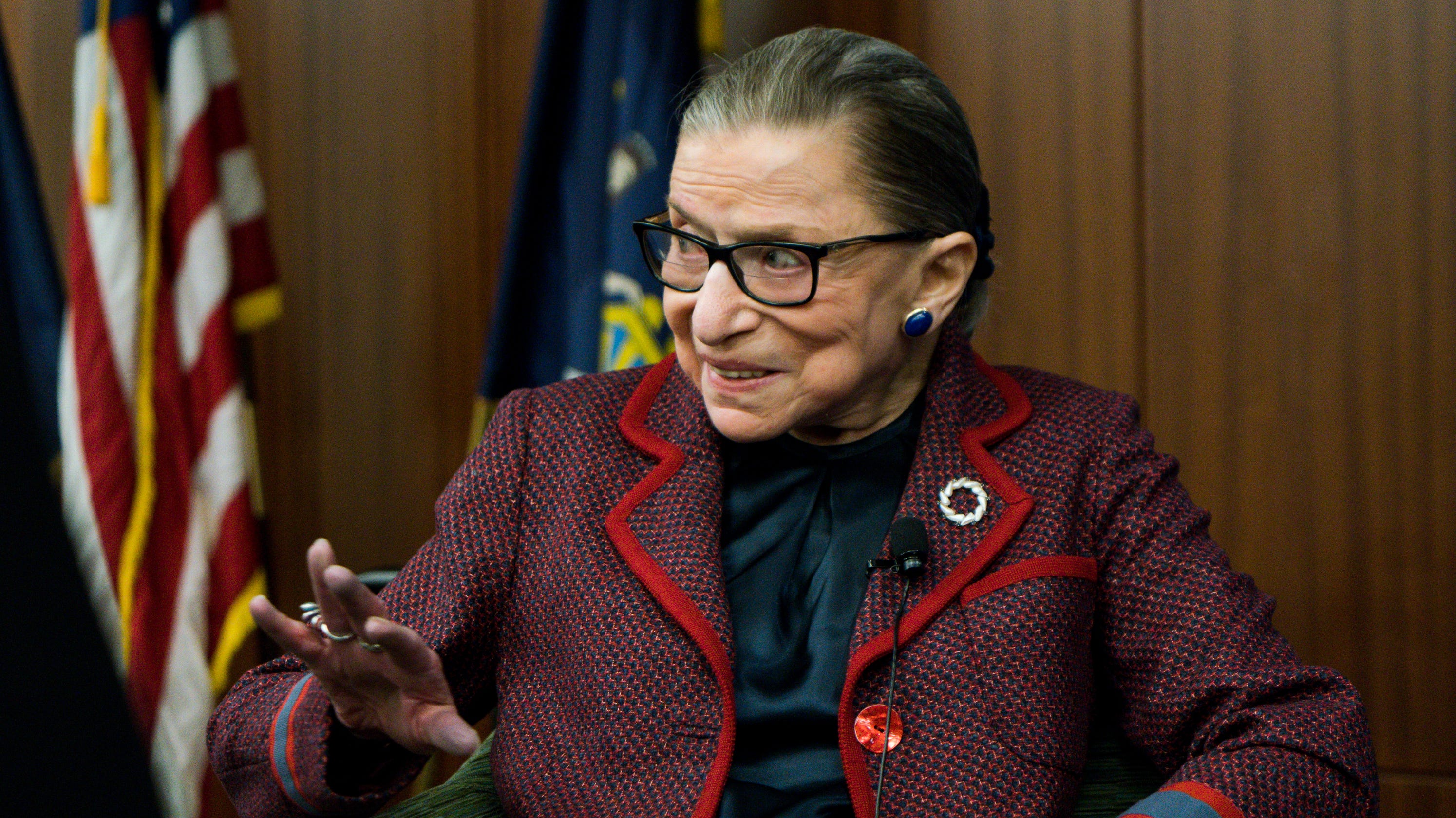October 6, 2020
A Tribute to Ruth Bader Ginsberg
Ruth Bader Ginsberg and the Environment
Ruth Bader Ginsberg (RBG) passed away on Friday, September 18, and left the world in a state of shock. She was a diminutive figure, five feet tall, weighing 100 pounds, but packed a wallop on the Supreme Court. She was appointed to the Court by President Clinton to replace Sandra Day O’Connor in January, 1993, and remained the lone woman on the court until Justice Sonia Sotomayor was appointed in 2009, and later Justice Elena Kagan was appointed in 2010. Her death leaves us with one less champion for social justice and the environment and a hole in our hearts.
weighing 100 pounds, but packed a wallop on the Supreme Court. She was appointed to the Court by President Clinton to replace Sandra Day O’Connor in January, 1993, and remained the lone woman on the court until Justice Sonia Sotomayor was appointed in 2009, and later Justice Elena Kagan was appointed in 2010. Her death leaves us with one less champion for social justice and the environment and a hole in our hearts.
It’s no easy task to capture the scope of her decisions while on the Supreme Court but to simply say she was best known for her well-thought-out decisions, her judicial integrity, and her progressive constitutional interpretations. She made an important contribution to the court as part of the four members of the liberal bloc and became known as the Thurgood Marshal of the women’s rights movement.
RBG also sided with and wrote decisions for many environmental cases. She maintained that she based her decisions “on the strength of the arguments” so she didn’t always vote in step with all liberal causes. Some of her decisions reversed lower court findings and kept U.S. environmental laws intact. She helped make important decisions that have given us, until now, fairly sound environmental laws.
Following are two decisions involving the Clean Air Act that became landmark decisions:
- Massachusetts v. EPA, 2006, was a major victory for regulating climate change and Greenhouse Gases (GHGs). She sided with the majority in this case, which gave the federal government the authority to regulate GHG emissions as “air pollutants” under the Clean Air Act. The Bush Administration’s EPA denied such regulations as “inconsistent with Bush’s policies”. The Supreme Court’s 5-4 decision declared the EPA had the statutory authority to regulate GHG emissions in new motor vehicles. The court also ruled “policy judgments have nothing to do with whether greenhouse gas emissions contribute to climate change” and was not a justification for not using science in its polices. This decision resulted in six GHGs to be regulated by the Clean Air Act:

- carbon dioxide (CO2),
- methane (CH4),
- nitrous oxide (N2O),
- hydrofluorocarbons (HFCs),
- perfluorocarbons (PFCs),
- sulfur hexafluoride (SF6).
The decision allowed the EPA under Obama to set GHG emission standards for light-duty vehicles and to join with the Dept. of Transportation’s Corporate Average Fuel Economy (CAFE) standards in 2009. This was considered to be the largest effort in the U.S. against climate change. Unfortunately, Trump rolled back the standards earlier this year which split the auto industry — some manufacturers sided with California while others continued to resist.
- In American Electric Power v. Connecticut, eight states (California, Connecticut, Iowa, New Jersey, New York, Rhode Island, Vermont and Wisconsin) along with three land conservation groups filed suit against four electric companies and the Tennessee Valley Authority. Their claim was that these companies were the largest greenhouse gas emitters in the nation. The aim was to prove states and private parties can seek to curb utility emissions because of climate change and whether this action could be considered to be implied under federal law. While the states lost the case, it placed the action under the EPA and the Clean Air Act. This went on to allow consistency curbing GHGs with the previous case, Massachusetts v. EPA. Eight justices, including Justice Ginsberg, sided with the electric companies to make this happen.

There were numerous cases involving the Clean Water Act. Below is one important Supreme Court decision that upheld the right of private citizens to bring lawsuits in federal court against industries for violations in the nation’s environmental laws:
- In Friends of the Earth v. Laidlaw, decided in 2000, Ginsberg actually wrote the court’s opinion. The company, Laidlaw Environmental Services, was granted a Pollutant Discharge Permit by the South Carolina Dept. of Health and Environmental Control (DHEC). Friends of the Earth sued in 1992 because Laidlaw repeatedly violated the terms of the permit by dumping pollutants into the waterway. Laidlaw and the DHEC settled the case with the company paying $100,000 in civil penalties and ordered to make every effort to comply with its permit agreement. The company sold the facility during the proceedings. Justices Scalia and Thomas were the only dissenters.
Two other important Clean Water Act cases address the “navigable waters” defined as “waters of the United States” portion of the Clean Water Act. Even though RBG voted in favor of protecting these waters, the two cases gave the Trump Administration its ability to narrow its interpretation of the Clean Water Act by disengaging some protected wetlands and other water sources from nearby waterways, which takes them out of being classified as “waters of the United States”
- In Solid Waste Agency of Northern Cook County (SWANCC) v. Army Corps of Engineers the decision in January, 2001, had to do with an abandoned sand and gravel pit in a Chicago suburban area. Since landfills are considered interstate commerce, the Commerce Clause was involved and whether intrastate waters that might affect interstate commerce is considered in the Clean Water Act. The court sided with SWANCC denying the Corps attempt to apply the Clean Water Act to intrastate waters. Also, the Migratory Bird Act came into play as the Corps showed how the ponds in the sand and gravel pits were important to bird migrations. Justice Ginsberg voted with the Corps and migrating birds in a 5-4 decision in favor of SWANCC and against the Clean Water Act.
- In 2006, Rapanos v United States, saw the Army Corps of Engineers refusing to permit a land owner, John Rapanos, to fill in three wetland areas to build a shopping center. Mr. Rapanos claimed the wetlands were separate from “navigable waters” and not meant to be regulated by the Clean Water Act. The Corps cited a connection to “navigable waters” and was defended by the EPA. It was complicated by a man made ditch that emptied into navigable waters and also required careful explanation why these three wetlands should be considered “waters of the United States”. Ginsberg sided with the minority and the Corps of Engineers, losing the case to Rapanos by a 5-4 decision.
These are some of the many decisions made by the Supreme Court regarding the Environment during RBG’s tenure (1993 – 2020). There were many other environmental decisions and it’s safe to say RBG took part in maintaining the shape of our regulations. Not every decision was victorious for the Environment a

nd the story is still unfolding. It’s sad that she may be replaced by a justice of the most conservative kind and could seriously damage environmental laws and how they are implemented for many years.
The T-shirts with “You Can’t Spell Truth Without Ruth” are still worn by her many fans and remain as proof that she will not be forgotten.
Sources of Events:
Friends of the Earth – located at the David Brower Center, Berkeley.
350Bay Area – Includes other 350.org branches in the Bay Area.
Planet Drum – San Francisco bioregion awareness center.
Ecology Center – Berkeley sustainability center.
David Brower Center – The environmental center in Berkeley.
Sunflower Alliance – Bay Area umbrella organization for activism.
Sierra Club San Francisco – Bay Area website.

The End